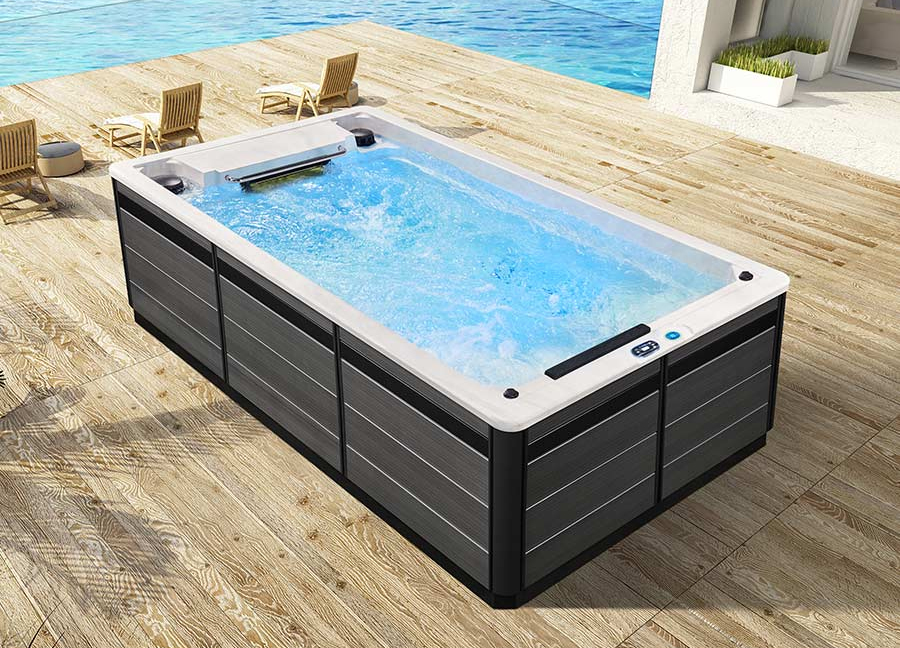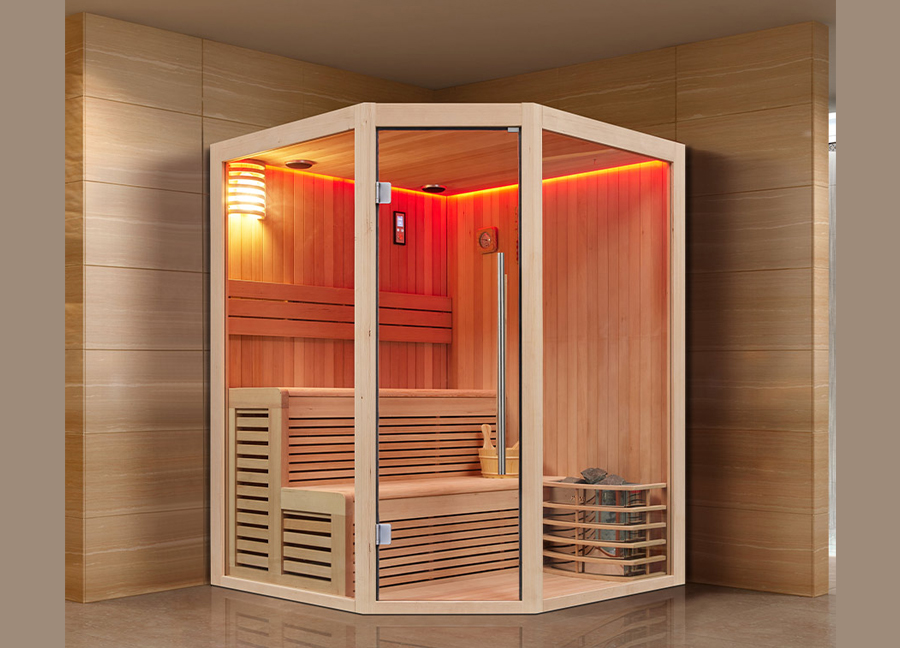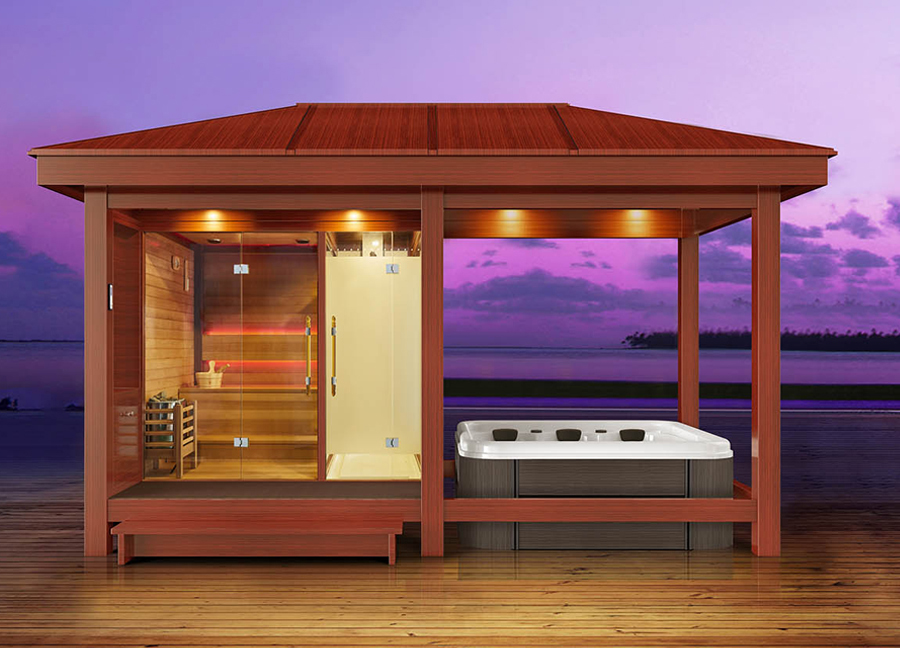For those who own a hydrotherapy spa tub, maintaining its cleanliness and hygiene is a crucial maintenance task. Over time, limescale, soap residue, skin oils, and bacteria accumulate on the tub's surface, in the nozzle pipes, and in the filtration system, affecting the spa's effectiveness and safety.
Many people are looking for a simple, natural, and safe cleaning method, leading to the common question—can I rinse my hydrotherapy spa tub with vinegar?
The answer is: yes, but you need to understand the correct method, proportions, and precautions.
This article will systematically explain the scientific principles, applicable scope, advantages, disadvantages, and correct operating procedures for cleaning a hydrotherapy spa tub with vinegar, allowing you to ensure the longevity and hygiene of your equipment while avoiding any damage.
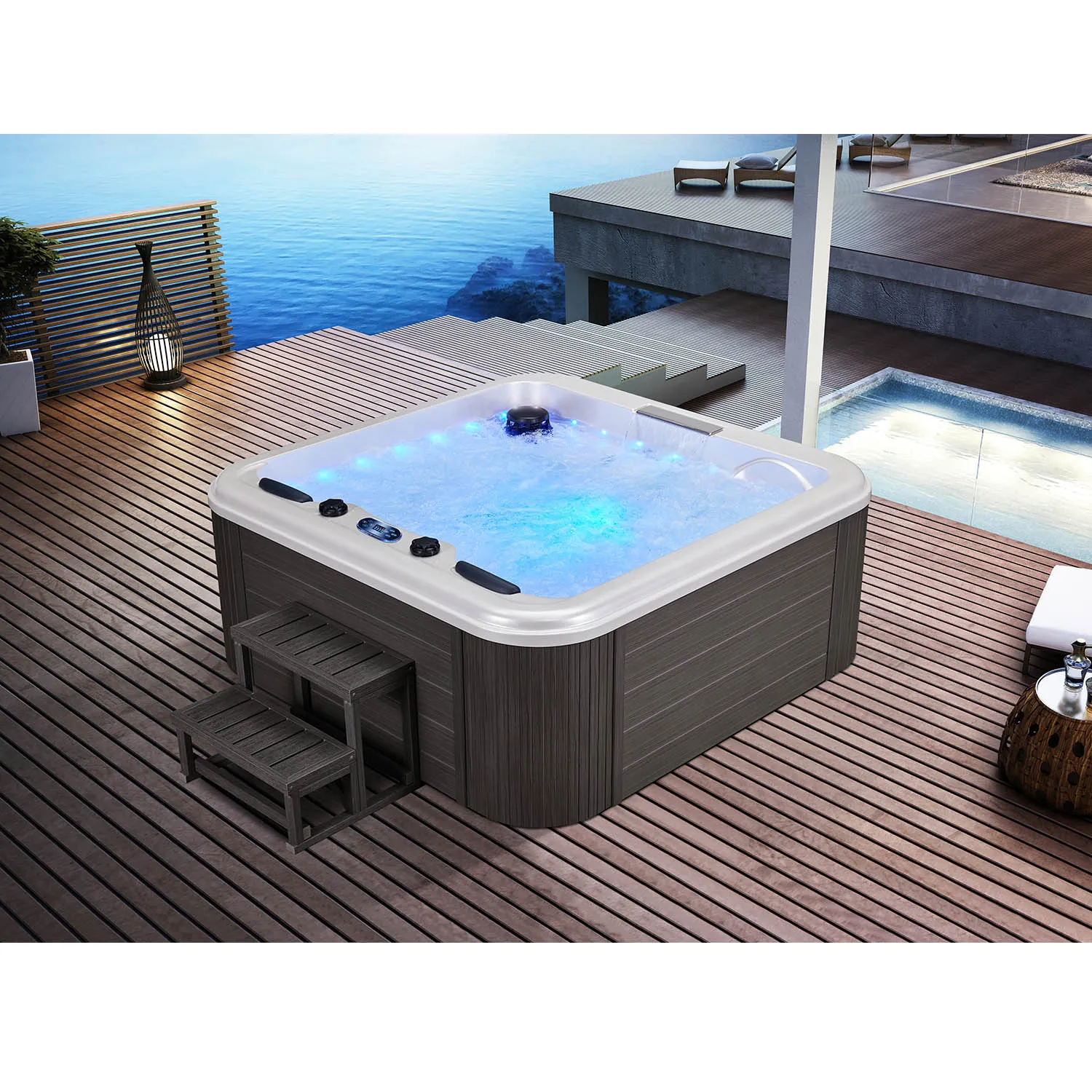
Why does a hydrotherapy spa tub need regular cleaning?
A hydrotherapy spa tub has a complex structure, including nozzle pipes, a circulation pump, a filter, a water pump system, and control valves. Each time it's used, sebum from the body, bath product residue, and minerals from hard water enter the water system. Long-term accumulation of these substances can cause the following problems:
• Clogged nozzles, weakened water pressure;
• Bacteria and mold growth in the pipes;
• Cloudy water or unpleasant odor;
• Accelerated aging of internal parts;
• Significantly reduced hydrotherapy massage effect.
Therefore, regular cleaning is not only about maintaining a clean appearance, but also a key step in extending the lifespan of the equipment and maintaining the quality of the hydrotherapy experience.
Why do some people choose to clean their hydrotherapy spa tubs with vinegar?
1. Chemical Properties and Descaling Principle of Vinegar
The main component of vinegar is acetic acid, whose weak acidity can effectively decompose hard water scale substances such as calcium carbonate and magnesium ions, while also possessing mild bactericidal properties.
This makes vinegar widely used in household cleaning, such as cleaning kettles, washing machines, and shower heads. It also has its merits in cleaning hydrotherapy spa tubs.
2. Advantages of Vinegar
• Natural and Safe: Contains no highly corrosive ingredients, gentle on skin and respiratory system;
• Environmentally Friendly: Easily biodegradable, does not pollute the environment;
• Inexpensive: Available readily, economical and practical;
• Effective Descaling: Works well on light limescale and soap residue.
Therefore, many users choose vinegar instead of chemical cleaners for natural descaling and gentle disinfection.
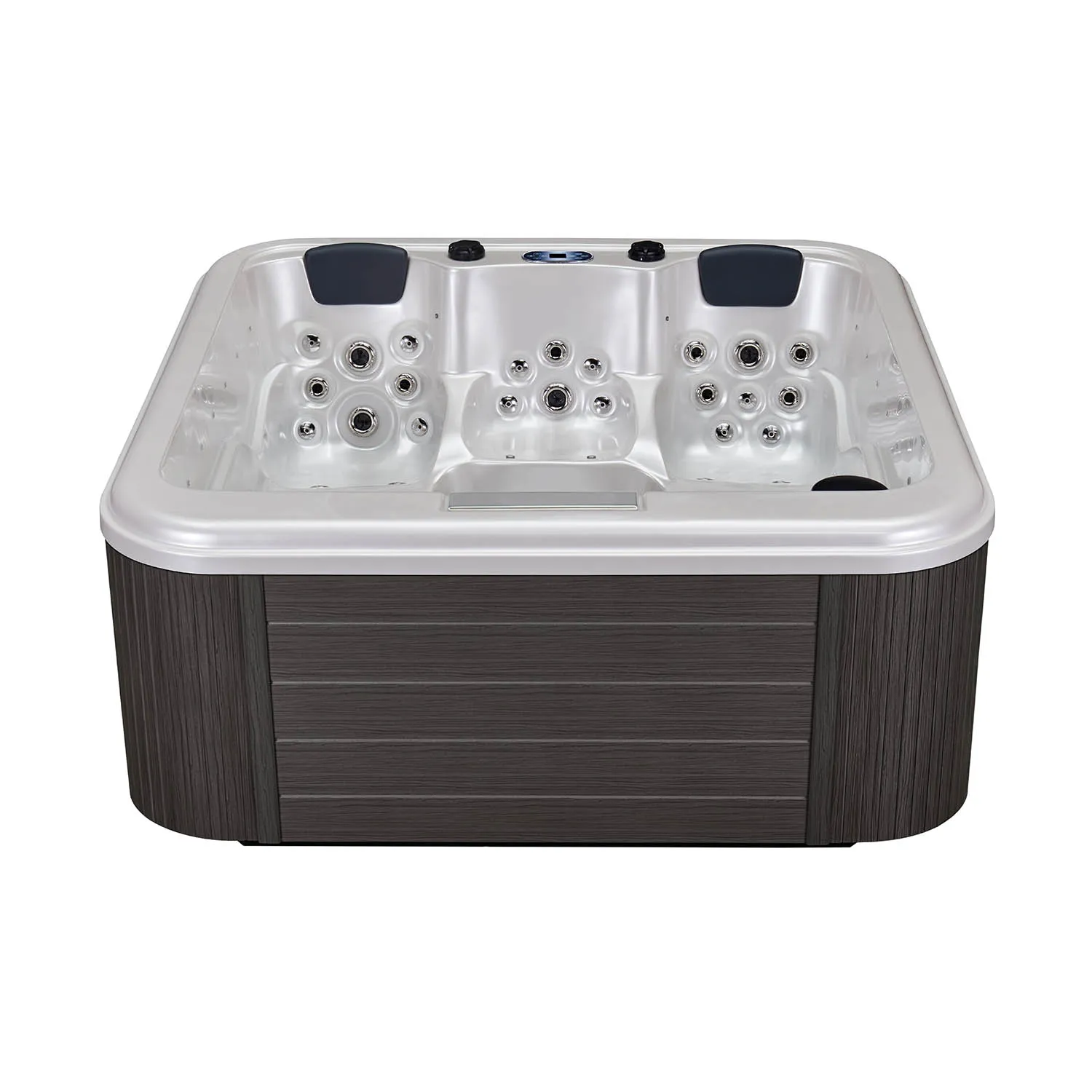
Can I really use vinegar to rinse my hydrotherapy spa tub?
Yes, but the prerequisites and correct methods are important.
Vinegar can be used as a daily cleaning aid for hydrotherapy spa tubs, especially for softening limescale and neutralizing soap residue, but it should not be used as the sole or primary deep-cleaning agent.
Before use, please confirm the following:
• Manufacturer's instructions: Some high-end hydrotherapy spa tubs have nozzles or sealing rings that are sensitive to acidic liquids. Refer to the user manual for cleaning agent restrictions.
• Vinegar concentration: Common household white vinegar (5% acetic acid concentration) is generally safe, but high-concentration industrial vinegar should not be used.
• Frequency of use: It is recommended to use vinegar for light cleaning every 1-2 months. Deep cleaning still requires the use of a dedicated tubing cleaning solution.
How to properly use vinegar to rinse a hydrotherapy spa tub?
Step 1: Draining and Pre-treatment
• First, ensure the hydrotherapy spa tub is powered off to prevent accidental start-up.
• Drain any remaining water and wipe away any visible oil and foam residue with a clean cloth.
• Check the nozzles and filter for blockages; remove and clean them if necessary.
Step 2: Preparing the Vinegar Solution
• Prepare the solution according to the following ratio: 1 part white vinegar + 2 parts warm water.
• For thicker limescale buildup, increase the vinegar ratio to 1:1, but do not use pure vinegar.
• Ensure thorough mixing before pouring into the bathtub, covering all nozzles.
Step 3: Run the Cleaning Circulation
• Turn on the hydrotherapy system and run the jet function for 10-15 minutes to circulate the vinegar water in the pipes.
• The acetic acid will gradually soften limescale and grease, helping to remove hidden residues in the pipes.
• If the odor is strong, the running time can be extended appropriately, but not exceeding 20 minutes.
Step 4: Soak and Let Set
• Turn off the system and let the vinegar water sit for about 30 minutes to allow it to continue breaking down stubborn dirt.
Step 5: Drain and Second Rinse
• Drain the vinegar water, refill the bathtub with clean water, and run the system again for 5 minutes to ensure all vinegar residue is completely removed.
• Finally, drain thoroughly and dry the tub, ensuring good air circulation.
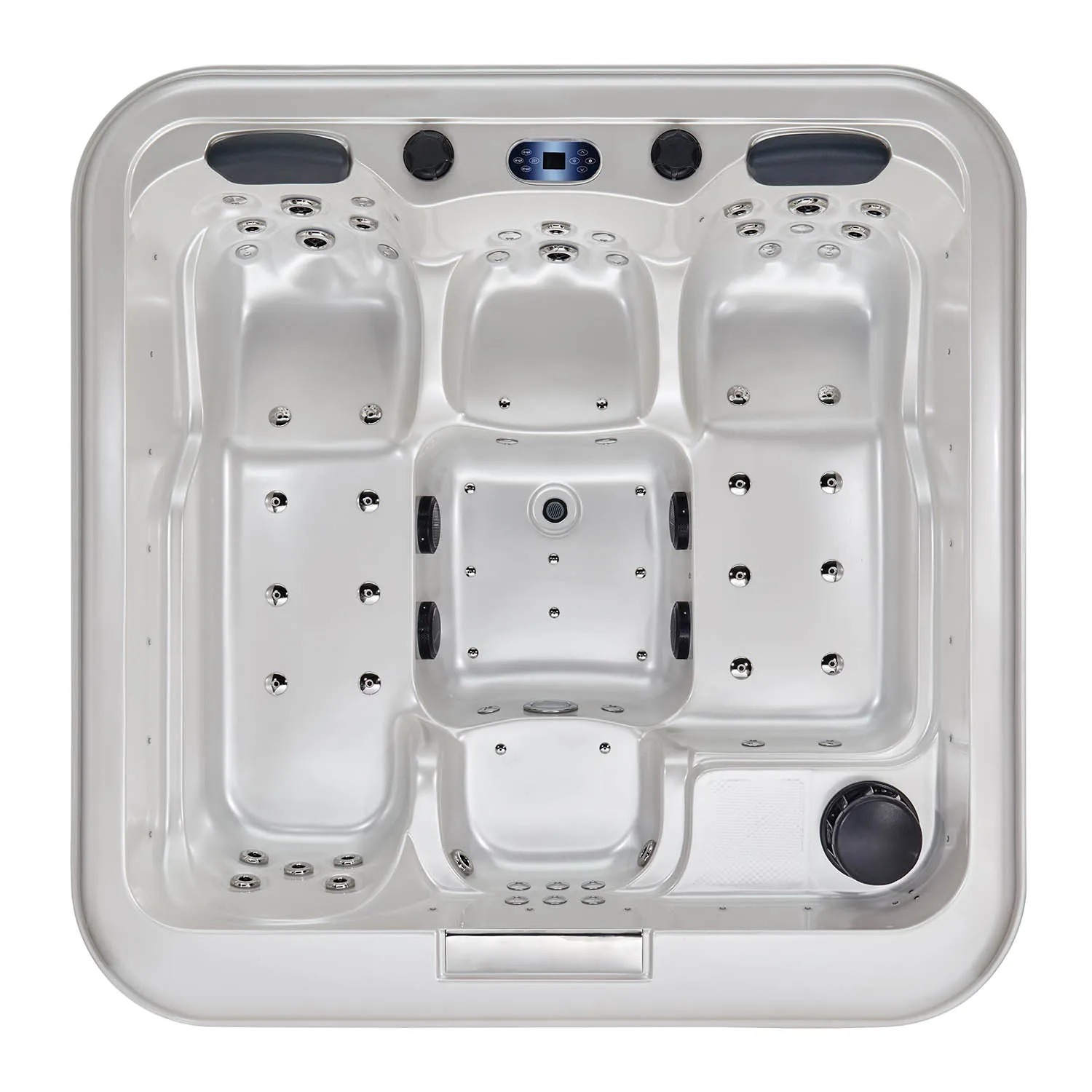
What are the advantages and disadvantages of using vinegar to clean a hydrotherapy spa tub?
Advantages:
• Gentle and non-irritating: Less likely to damage surface coatings compared to strong acid cleaners;
• Economical: No need to purchase expensive specialized cleaning solutions;
• Environmentally friendly and safe: Naturally sourced, free of harmful chemicals;
• Removes scale and odor: Effectively removes light odors and soap scum.
Disadvantages:
• Limited bactericidal ability: Acetic acid cannot completely kill bacteria, mold, or biofilms;
• Difficult to remove heavy dirt: Not very effective against stubborn grease or sticky buildup;
• Excessive use may corrode parts: Prolonged soaking in high concentrations can damage rubber seals and nozzle plating.
Therefore, vinegar is suitable for daily maintenance and light cleaning, but regular deep cleaning with professional cleaning products is still necessary.
Do I need to disinfect after rinsing with vinegar?
Yes. While vinegar can remove most visible dirt and scale, its antibacterial properties are insufficient to ensure complete hygiene of the hydrotherapy spa tub.
After cleaning with vinegar, it is recommended to perform a gentle secondary disinfection as follows:
• Briefly flush the pipes with a low-chlorine concentration cleaner (such as chlorine bleach diluted 1:200);
• Alternatively, choose a disinfectant specifically for hydrotherapy spa tubs and clean according to the product instructions;
• Finally, be sure to rinse thoroughly with clean water to prevent residue from irritating the skin.
Common Misconceptions about Cleaning Hydrotherapy Spa Tubs with Vinegar
Misconception 1: Pure vinegar is more effective at removing grime
In fact, high concentrations of acetic acid are corrosive to nozzle plating, rubber seals, and other components, and long-term use can damage the tub's structure.
Misconception 2: Only cleaning the surface of the tub
The core grime in a hydrotherapy spa tub is mostly hidden in the internal circulation pipes; simply wiping the surface does not truly clean the system. The spray circulation must be run to allow the vinegar solution to enter the pipes.
Misconception 3: One cleaning will keep it clean indefinitely
Due to the continuous accumulation of bacteria and minerals in the water, a single cleaning only provides short-term improvement. It is recommended to perform maintenance monthly and a deep cleaning every three months.
Myth 4: Neglecting a Second Rinse with Water
If residual vinegar is not thoroughly rinsed off, it will produce a sour or irritating smell when heated again, causing skin irritation.
What are the alternatives if you don't want to use vinegar?
While vinegar is a common cleaning option, in some situations (such as sensitive materials or long-term use), other more suitable methods may be necessary:
• Baking soda + warm water: A weakly alkaline reaction neutralizes grease and is skin-friendly;
• Citric acid powder: A natural acid, its descaling effect is more stable than vinegar;
• Hydrogen peroxide tubing cleaner: Contains surfactants and disinfectants, which can deeply remove biofilm;
• Hydrogen peroxide solution: A gentle oxidative cleaning solution with a mild disinfecting effect.
Different methods can be used alternately to maintain the hydrotherapy spa tub in optimal hygiene.
How often should you clean your hydrotherapy spa tub with vinegar?
The cleaning frequency depends on usage frequency and water quality.
General recommendations are as follows:
Frequency of use | Vinegar cleaning cycle | Deep cleaning cycle |
| Use 1-2 times per week | Once a month | Every 3 months |
Use daily | Once every two weeks | Every month |
| Use occasionally | Once every two months | Every six months |
If you live in an area with hard water (high mineral content), you should increase the frequency of vinegar cleaning to prevent scale buildup.

Vinegar is a safe and effective natural cleaning option, but it must be used correctly
In summary, vinegar can indeed be used to rinse a hydrotherapy spa tub, but only if the method is correct, the concentration is appropriate, and the frequency of use is reasonable.
It can help soften limescale, remove odors, and clean surfaces, but it cannot completely replace the deep-cleaning effect of professional cleaners.
The ideal way to keep your hydrotherapy spa tub clean, safe, and hygienic is to:
• Regularly use diluted vinegar for light maintenance;
• Intermittently use a professional pipe cleaner;
• Ensure thorough rinsing after each cleaning.
This will allow you to fully utilize the therapeutic functions of your hydrotherapy spa tub while ensuring the equipment's durability and safer use.
How Competitive Are Your Prices Compared with Other Suppliers?
We keep our prices competitive by producing everything in our own factory. With scale manufacturing for swim spas, massage bathtubs, and outdoor spas, we benefit from bulk raw material sourcing and efficient labor management.
This results in low-price offers for wholesale buyers, without reducing product quality. International partners often highlight MEXDA as their go-to China supplier, thanks to our balance of affordable cost, high-quality output, and reliable sales service.

